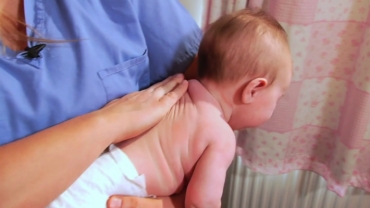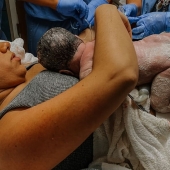Almost all women have some degree of blood loss over the 3 or 4 days after childbirth, and most women have some light vaginal bleeding for up to 4 weeks afterwards. Postpartum haemorrhage is defined as the loss of more than 500 ml (1 pint) of blood after childbirth.
After delivery of the baby, the placenta normally separates from the wall of the uterus and is then expelled from the body through the vagina. The site where the placenta was attached continues to bleed until strong contractions of the uterus constrict the blood vessels in the wall of the uterus and gradually stop the flow of blood. The majority of postpartum haemorrhages, especially if severe, are the result of bleeding from the uterus. However, bleeding may also come from the cervix or the vagina.
Postpartum haemorrhage occurs in about 1 in 50 births, usually immediately after delivery (early postpartum haemorrhage). Only a few women have a late postpartum haemorrhage, in which excessive bleeding occurs more than 24 hours after delivery. Severe postpartum haemorrhage may be life-threatening, but is uncommon.
- 138 views













